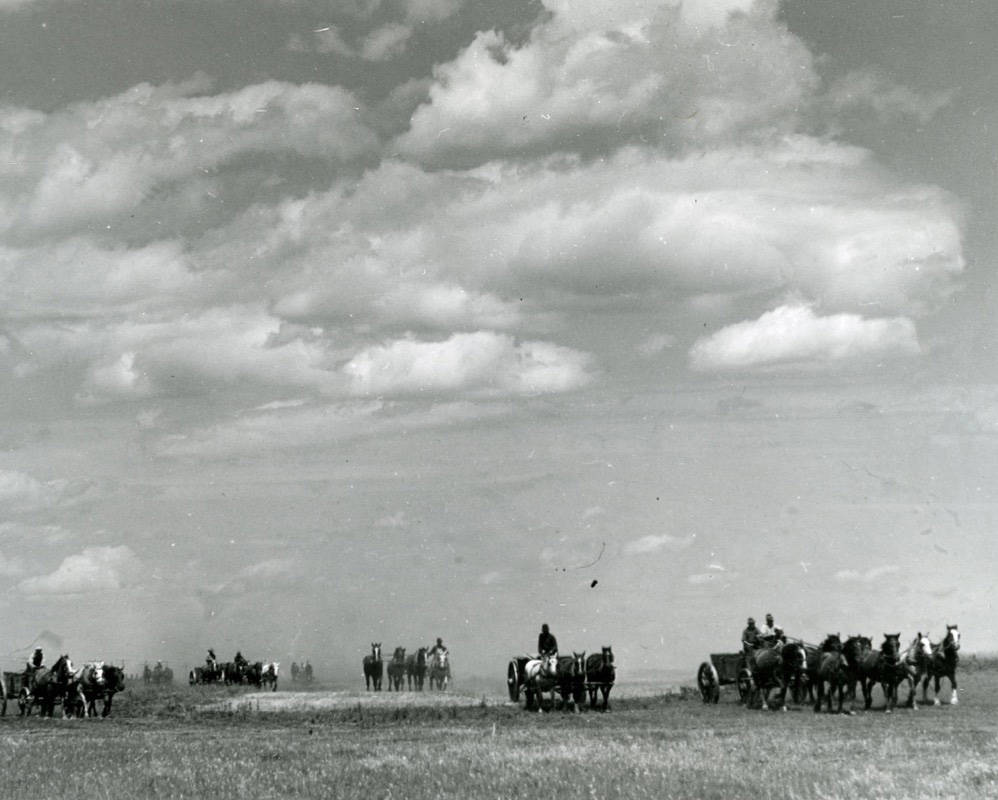By Michael Dawe
Red Deer Express
Central Alberta has been experiencing some very hot and dry weather.
Meteorologists have been forecasting more days of such weather in the coming weeks. However, no matter how hot and dry conditions may become, it will be hard to equal the heat wave of 1936.
The heat wave commenced at the beginning of July in southern Saskatchewan and Manitoba. On July 5th, temperatures hit 43.9C in Midale, Saskatchewan. However, the extreme conditions were only just beginning.
Temperatures continued to spike upwards. By the middle of the month, it was 44C in Emerson, Manitoba. For more than two weeks, temperatures across the Canadian prairies remained well above 32C.
In the days before air-conditioning, the continuing extreme heat took a terrible toll. Across Canada, there were more than 780 heat-related deaths.
There was also an acute drought. The infamous ‘Dust Bowl’ conditions became so severe that the newspapers were soon full of articles about the immense dust storms.
While Central Alberta fared a little bit better than other parts of the prairies, local crops suffered severe damage from the prolonged hot and dry weather.
Wheat crops became so light that some local farmers started swathing by the end of July.
People did what they could to escape the heat. Several restaurants and food outlets in town took out ads offering wonderful deals on ice cream and cold drinks.
Mr. Leppard, the local iceman, did an incredible amount of business. However, he had to do his deliveries in the early morning to avoid the intense heat.
Red Deer did not have any public swimming pools. Hence, many people flocked to the Red Deer River to try and cool off. It was estimated that there were often several hundred people in the river, particularly in the early evenings.
Conditions in the river could be dangerous.
Swimmers sometimes forgot about deep water and strong currents. On a couple of occasions, children on old tire tubes got swept downstream and had to be rescued.
Finally, the Red Deer Rotary Club stepped in. The Club paid for a lifeguard to be posted at the north end of the old C.P.R. bridge to keep an eye on those in the river. Both the City of Red Deer and Village of North Red Deer spent some money to make the approaches on the banks of the river safer for those heading for the cooling waters.
A great many people also headed to resorts such as Sylvan Lake to escape the heat. Sylvan Lake had a large public beach as part of a lakeside provincial park.
There were public piers from which swimmers and boaters could further enjoy the lake.
The Village of Sylvan Lake was well prepared to handle the huge throngs of tourists. There were several excellent restaurants and numerous ice cream, popcorn, hamburger and hot dog stands.
There were also two excellent dance halls – the Varsity Hall and Alexander Pavilion – for an evening’s entertainment.
The Village organized a number of services and events for visitors and residents. A beach sports director was hired. He offered free swimming lessons and organized all kinds of beach sports.
A number of large events were staged.
There was a special Sports Day on July 1st. The local Elks Club organized a carnival with a midway, family entertainments and a wrestling match on July 3rd and 4th. A speed boat regatta was held in the middle of the month. Reg Whyte of Red Deer won the ‘hydroplane’ boat races.
The Wrigley Swim, the annual provincial swimming and water sports competitions, were held at the beginning of August. This time, it was mainly competitors from Edmonton who won the key races.
Thus, people managed to get through the hot dry summer of 1936. Fortunately, while some people suffered from heat stroke and other ailments, Red Deer and Central Alberta escaped having any heat-related deaths.



